Module 6#
Information Gain#
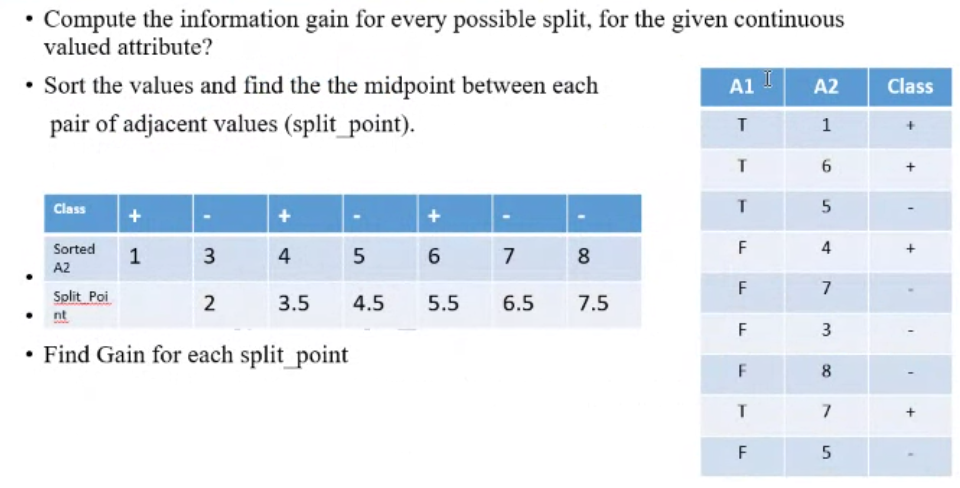

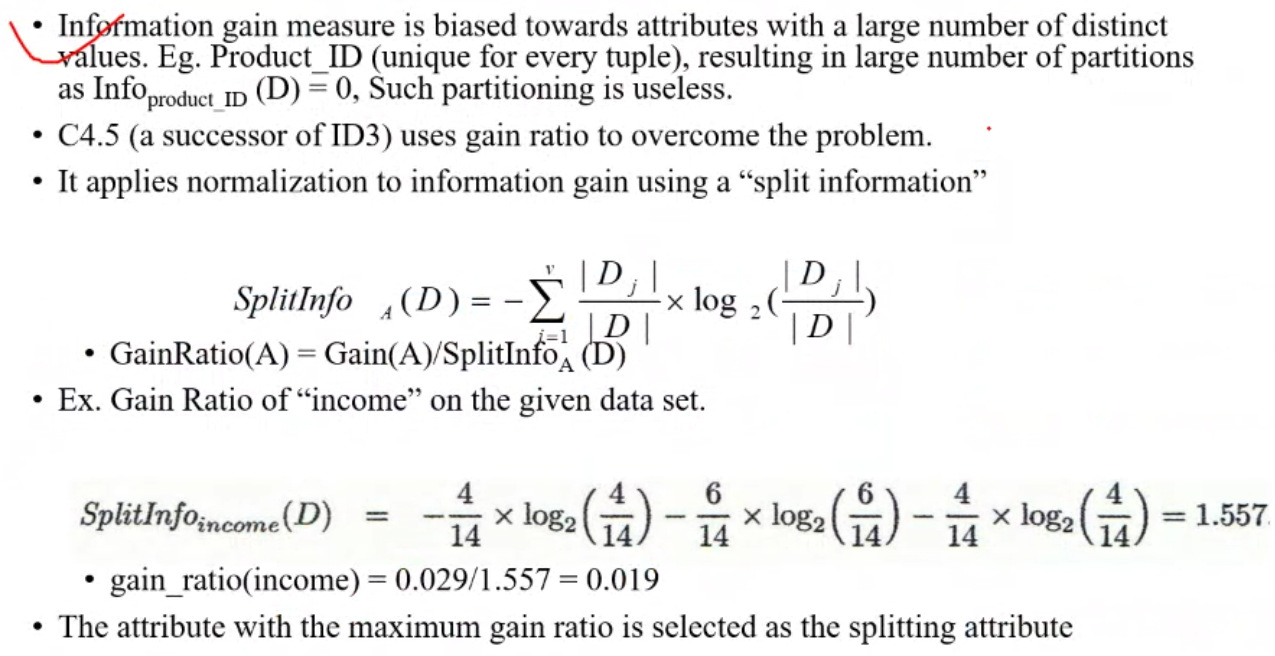
Gini Index#
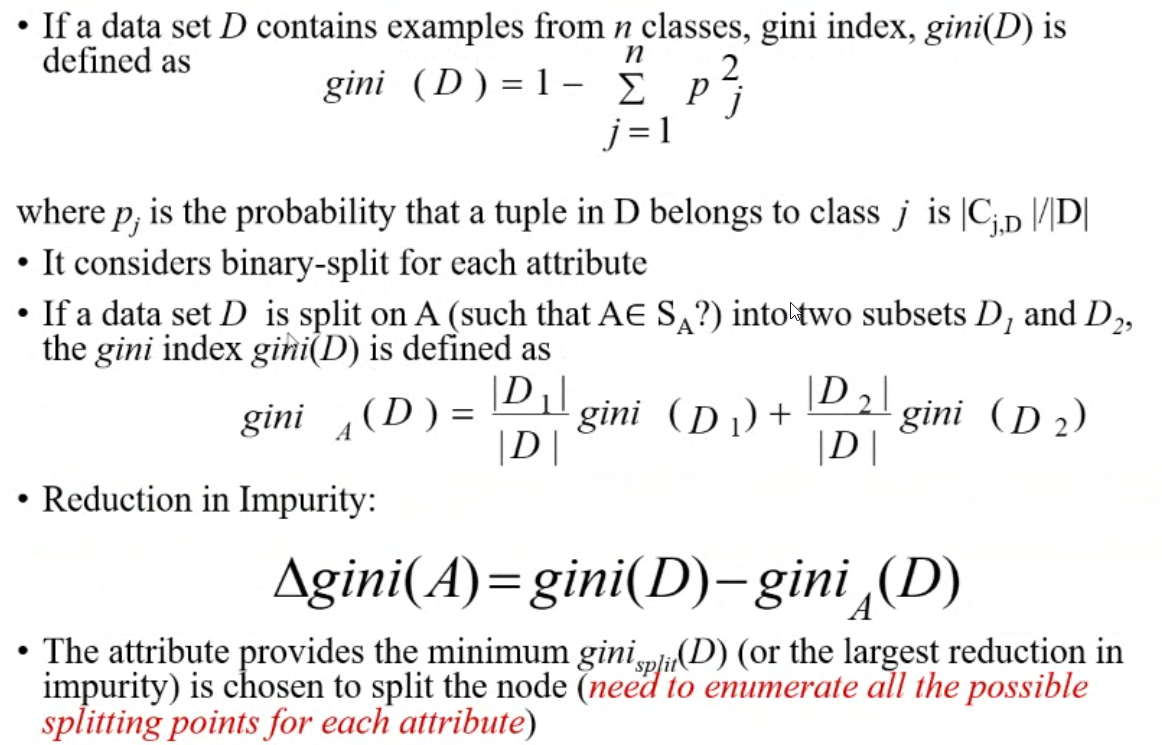
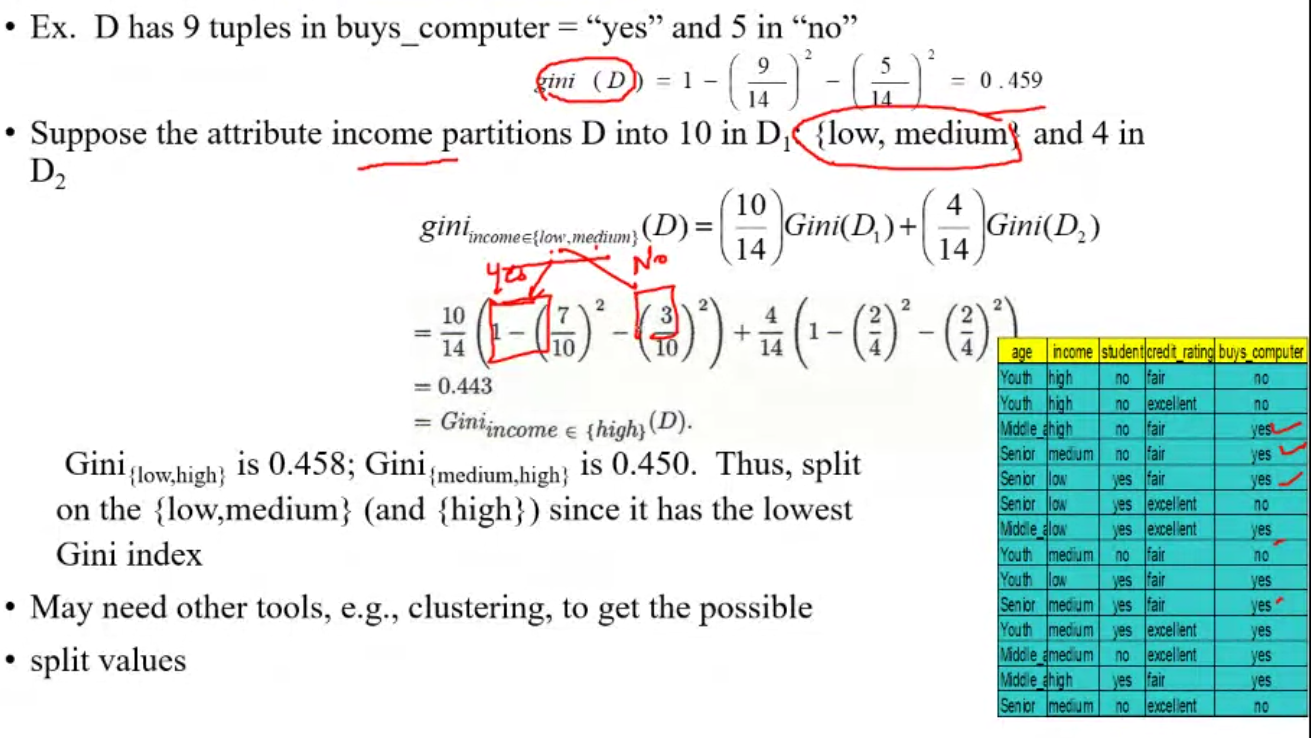
Inexpensive to construct
Extremely fast at
Inductive bias in decision tree learning#
- Inductive bias is the assumption made by the model to learn the target function and to generalize beyond training data
- What is the inductive bias of DT Learning
- Shorter trees are preferred over longer trees
- Prefer trees that place high information gain attributes close to the root
Limitations of decision tree learning#
- Overfitting
- Building trees that "adapt too much" to the training example may lead to "overfitting"
- May therefore fail to fit additional data or predict future observations reliably

Training data accuracy increases but the test data accuracy decreases when the size of the tree increases
- Pre pruning:
- Stop the algorithm before it becomes a fully grown tree
- General stopping conditions for a node
- Stop if all instances belong to the same class
- Stop if all the attribute values are the same
- More restrictive conditions:
- Stop if number of instances is less than some user specified threshold
- Stop if class distribution of instances are independent of the available features
- Stop if expanding the current node foes not improve impurity measures.
- Post pruning:
- Grow decision tree to its entirity
- Trim the nodes of the decision tree ina bottom up fashion
- If generalization error improves after trimming, replace sub tree by a leaf node
- Majority class of instances in the sub tree is used as the class label of leaf node.
Ensemble methods#
- Use multiple learning algorithms to obtain better predictive performance than could be obtained from any one of the constituent learning algorithm
- By combining individual models we can get less bias and less variance.
-
This method will perform worse if the error rate is \(\varepsilon \gt 0.5\)
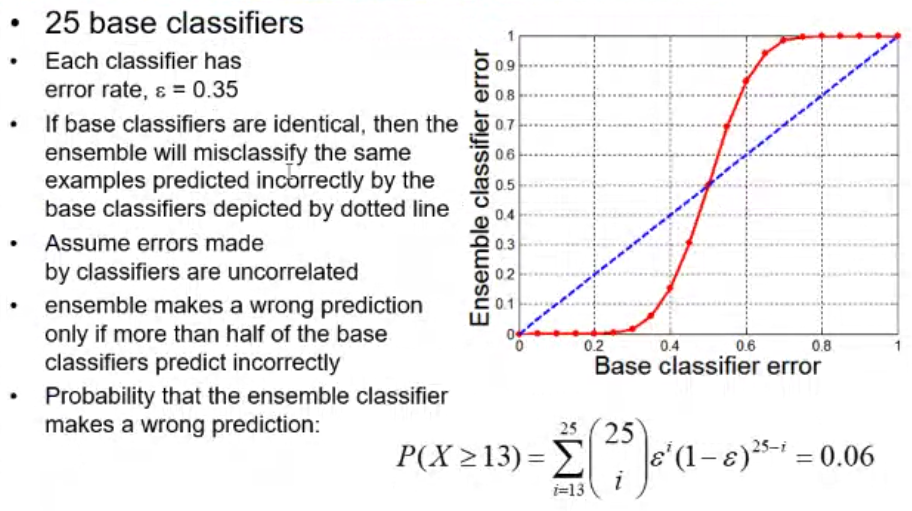
-
Each base class has to be independent of each other.
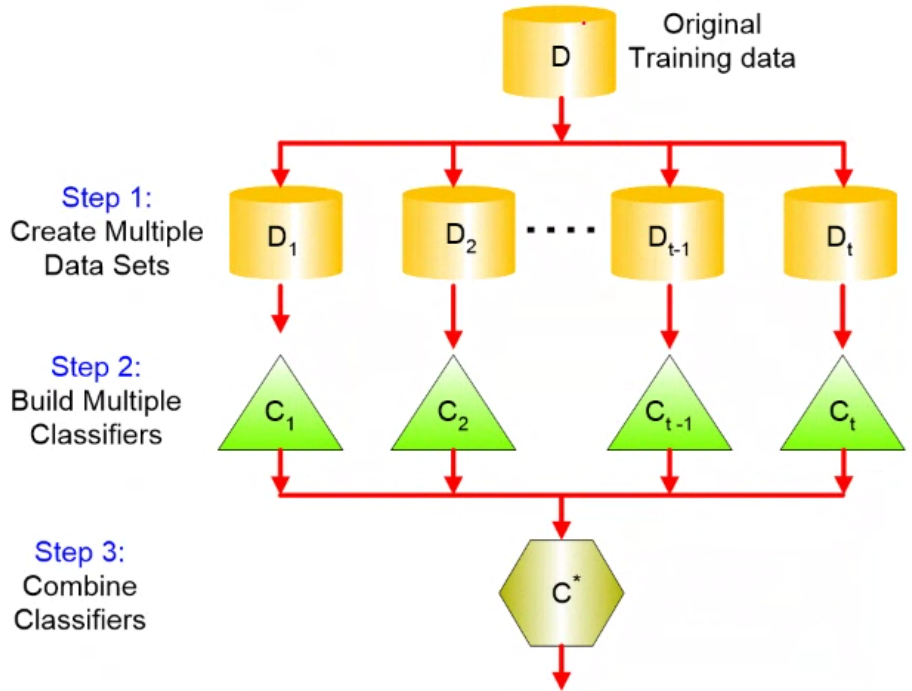
Methods for constructing ensemble classifier#
- Using different algorithms
- Using different hyper parameters
- Using different training sets
- By manipulating input features
- By manipulating the class labels
Types of ensemble methods#
- Simple methods:
- Max voting
- Averaging
- Weighted averaging
- Advanced methods:
- Bagging: Homogeneous weak learners, learning done independently from each other.
- Boosting: Homogeneous weak learners, learning done sequentially in a adaptive way.
- Stacking: Heterogeneous weak learners, learning done independently and combines them by training a meta model to output a prediction based on the different weak models predictions.
Bootstrap Sampling#

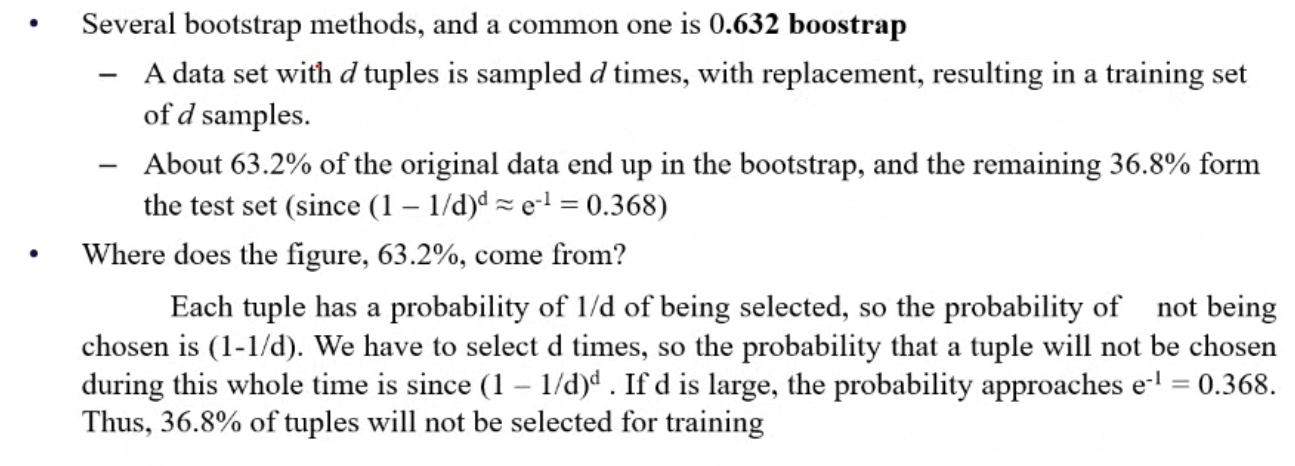

Bagging#

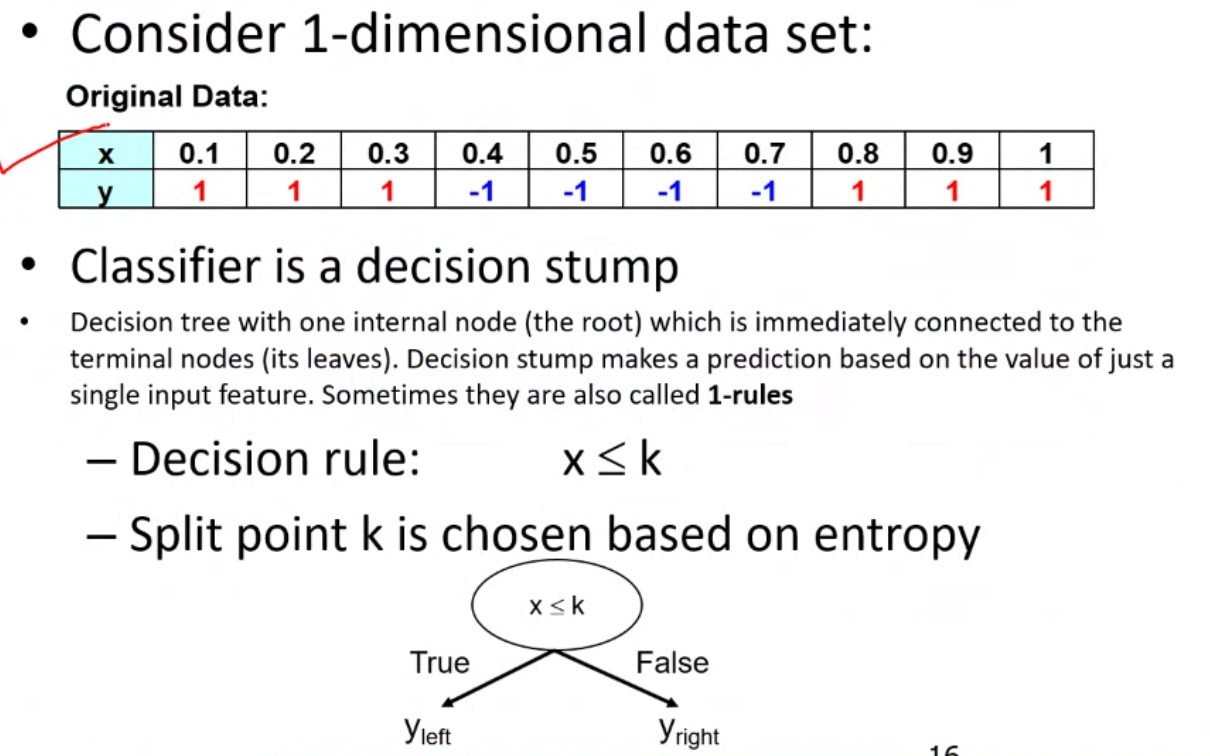
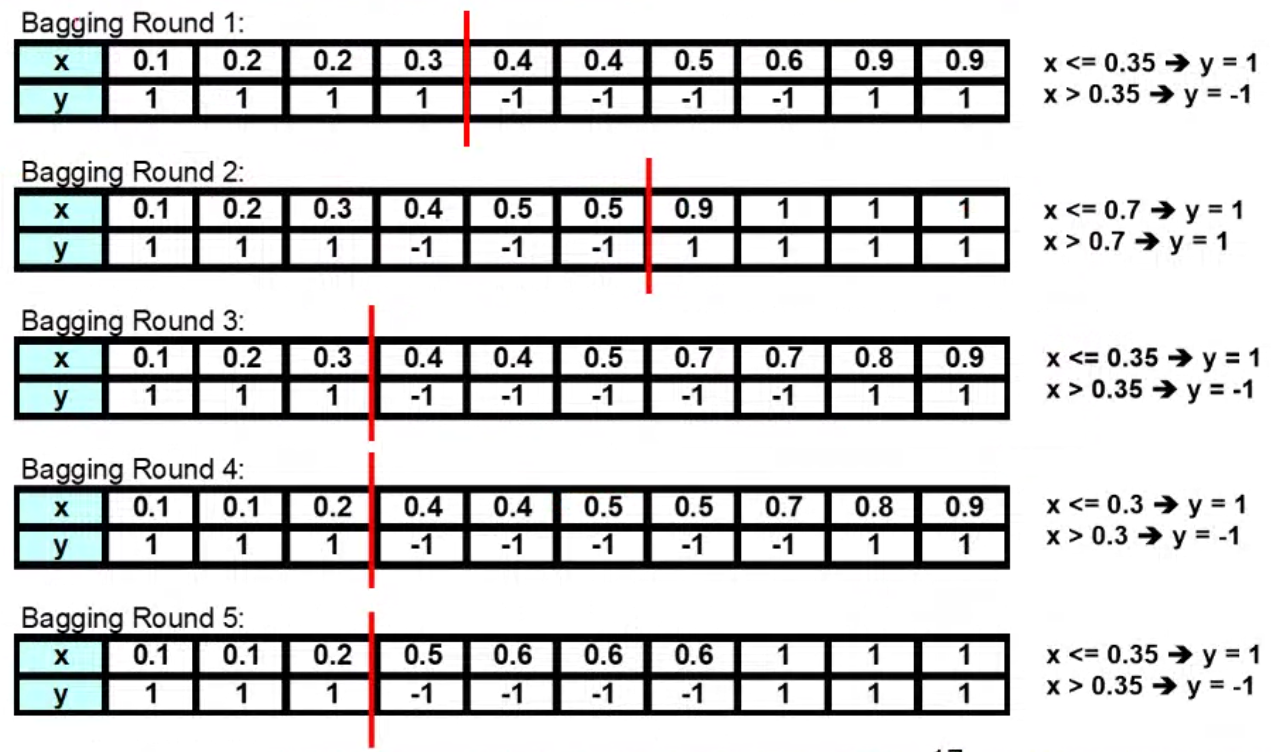
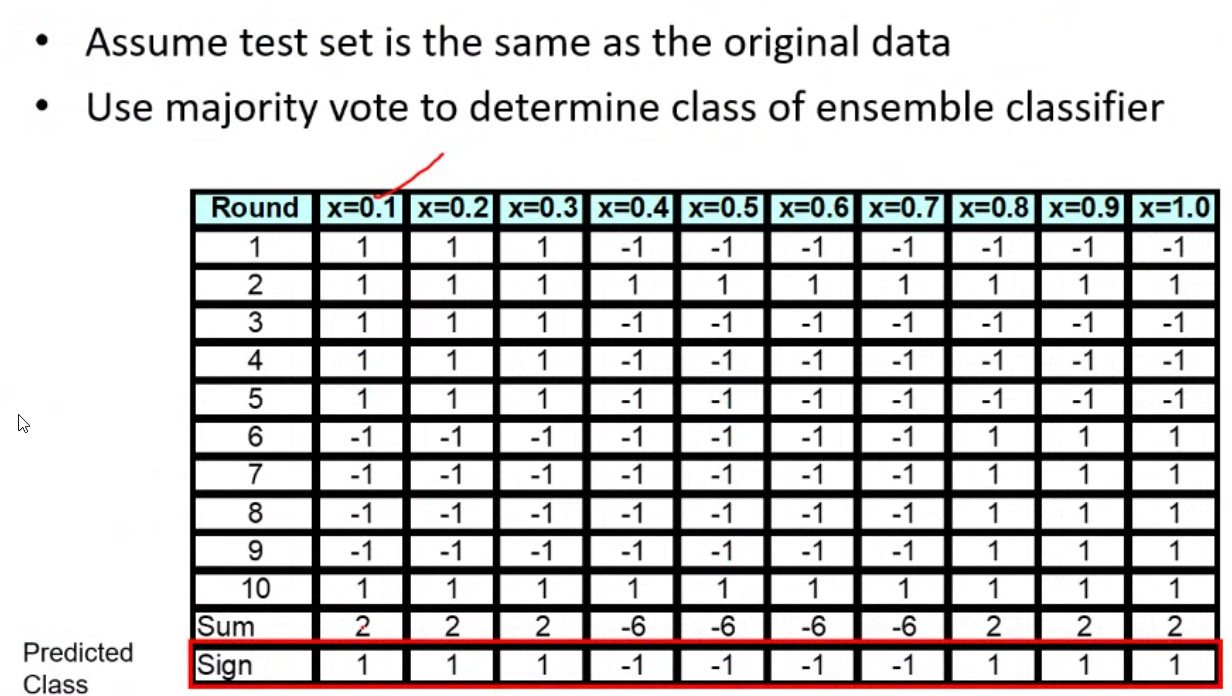
Tags: !AMLIndex